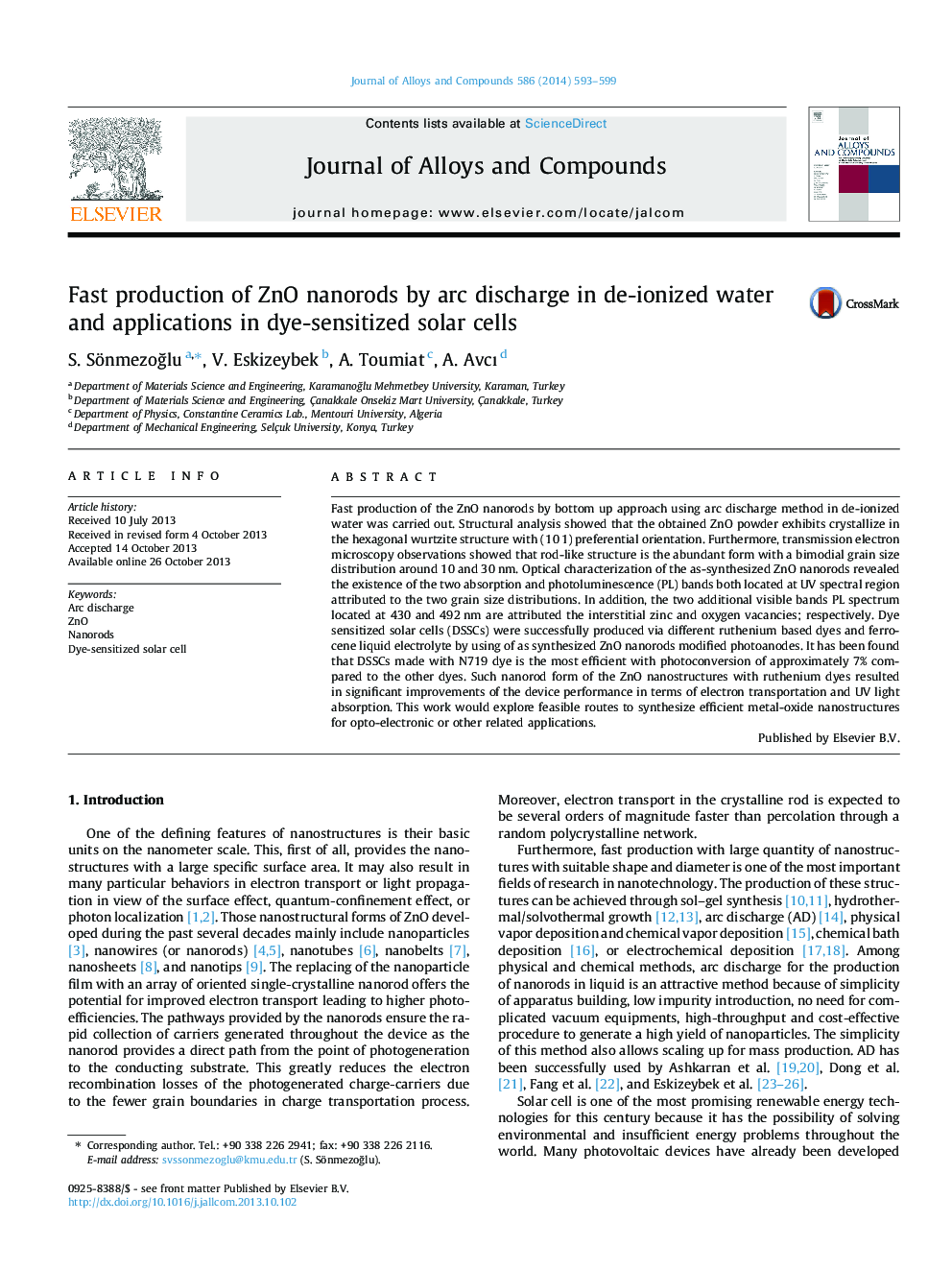| Article ID | Journal | Published Year | Pages | File Type |
|---|---|---|---|---|
| 1612699 | Journal of Alloys and Compounds | 2014 | 7 Pages |
•Fast production of ZnO nanorods was synthesized by bottom up approach using arc discharge in de-ionized water method.•A dye-sensitized solar cell based on ZnO nanorod displayed the most efficient solar to electricity conversion efficiency of the N719 dyes with a maximum η value of 6.96%.•We focused on the morphology, photocatalytical and optical properties of the ZnO nanorods.
Fast production of the ZnO nanorods by bottom up approach using arc discharge method in de-ionized water was carried out. Structural analysis showed that the obtained ZnO powder exhibits crystallize in the hexagonal wurtzite structure with (1 0 1) preferential orientation. Furthermore, transmission electron microscopy observations showed that rod-like structure is the abundant form with a bimodial grain size distribution around 10 and 30 nm. Optical characterization of the as-synthesized ZnO nanorods revealed the existence of the two absorption and photoluminescence (PL) bands both located at UV spectral region attributed to the two grain size distributions. In addition, the two additional visible bands PL spectrum located at 430 and 492 nm are attributed the interstitial zinc and oxygen vacancies; respectively. Dye sensitized solar cells (DSSCs) were successfully produced via different ruthenium based dyes and ferrocene liquid electrolyte by using of as synthesized ZnO nanorods modified photoanodes. It has been found that DSSCs made with N719 dye is the most efficient with photoconversion of approximately 7% compared to the other dyes. Such nanorod form of the ZnO nanostructures with ruthenium dyes resulted in significant improvements of the device performance in terms of electron transportation and UV light absorption. This work would explore feasible routes to synthesize efficient metal-oxide nanostructures for opto-electronic or other related applications.
